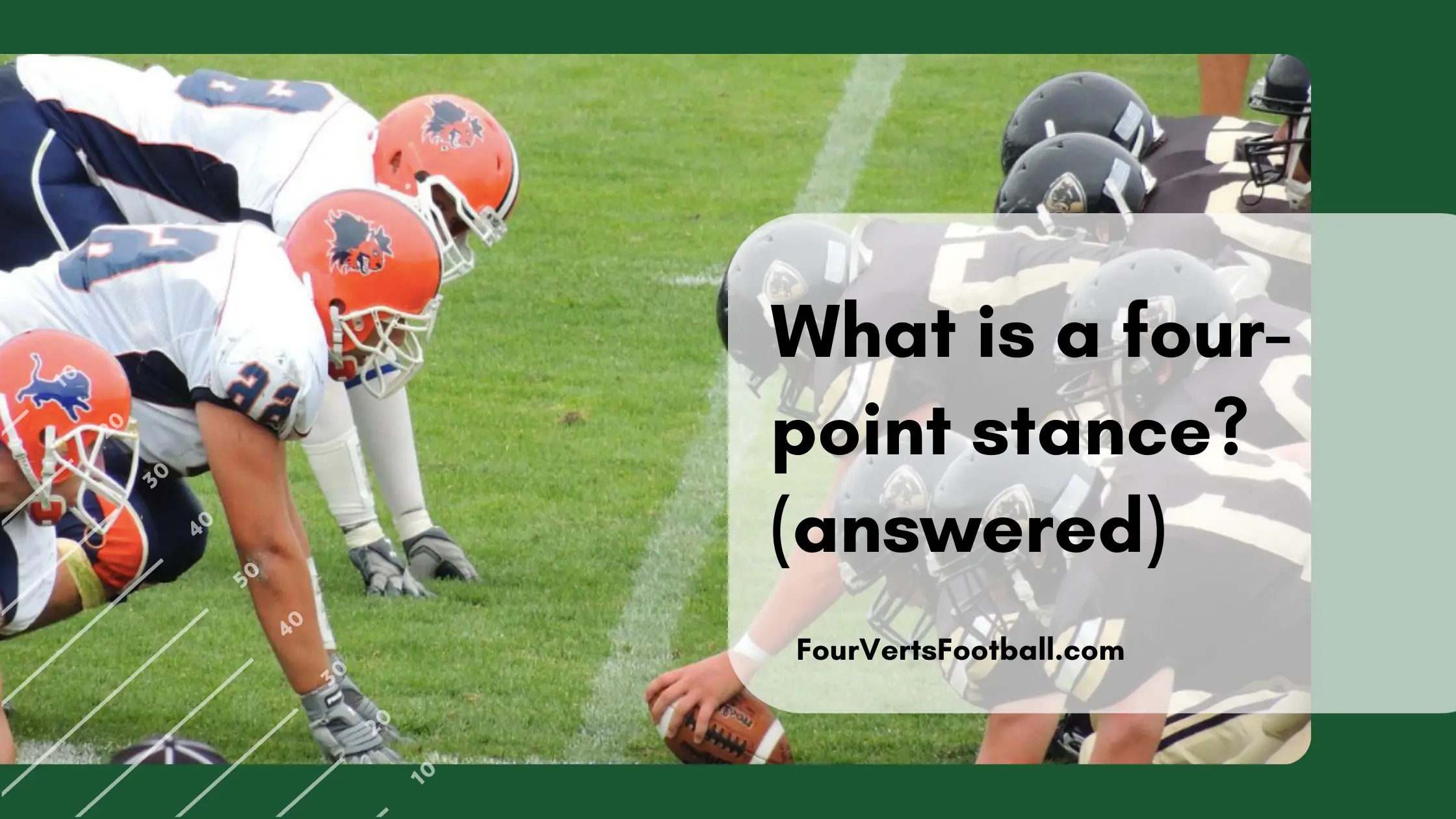A four-point stance in football occurs when a player has both feet and hands placed on the ground. In other words, they have four points of contact with the field.
In football, this stance is primarily used by defensive linemen. A four-point stance is going to have you start the play quite close to the ground.
This can give the defensive lineman improved leverage as well as a quick start off the snap.
Alternatives to the four-point stance include the two-point stance and the three-point stance.
The two-point stance features two points of contact both of which are a player’s feet on the ground. The two-point stance is another way of saying that a player is upright.
The three-point stance as you’ve likely guessed features three points of contact. In this stance, players will have two feet and one hand on the ground.
What are the benefits of a four-point stance?
Now that you know what a four-point stance is in football you may be wondering why players do it. Below we will breakdown all the major benefits of this stance in football.
Leverage
Oftentimes when using a four-point stance the defensive line is looking to stop the offense on a short-yardage situation.
In these situations, the offense will often rush the ball in the middle of the formation to pick up the needed yards. By using a four-point stance defensive lineman can start the player lower than the offensive lineman in front of them.
By coming out of the stance as the ball is snapped the defensive lineman will have leverage over the offensive lineman in front of them. This will allow them to stack the offensive line and plug the rushing hole.
Jumping the snap
Another reason that defensive lineman will use a four-point stance in football is when looking to jump the snap.
Some defensive coaches teach edge rushers how to use a four-point stance to help them get off the ball quickly.
When the ball is snapped these outside rushers will explode out of their stance and will travel outside around the offensive tackle to get to the quarterback.
Coming out of this four-point stance will allow the defensive lineman to generate more speed. This can often give them just enough space to get around the tackle before he has time to step in between the rusher and the quarterback.
The downfall of this strategy is that it potentially results in the edge defender rushing too far past the quarterback. This will cause the defender to lose contain giving the quarterback a chance to escape the pocket.
Covering two gaps
The four-point stance in football can also be handy when looking to cover two gaps. In football, defenders are often given one gap to cover in the run defense.
For example, this could be the hole between the tackle and the guard. Though on some plays defenders are asked to cover two gaps in the line.
On these plays, it can be beneficial to use a four-point stance in which the player leans backwards with more weight on their feet than their hands.
When the play starts the defender will stand up and get his hands on the lineman in front of him.
If the ball is carried to the left of the defender he will shred the block of the defender and cover the hole to his left. If the ball carrier is going to the right he shreds the block and covers the hole to his right.
This stance allows the player to square up with the offensive lineman giving him a chance to cover the gaps on either side of him.

